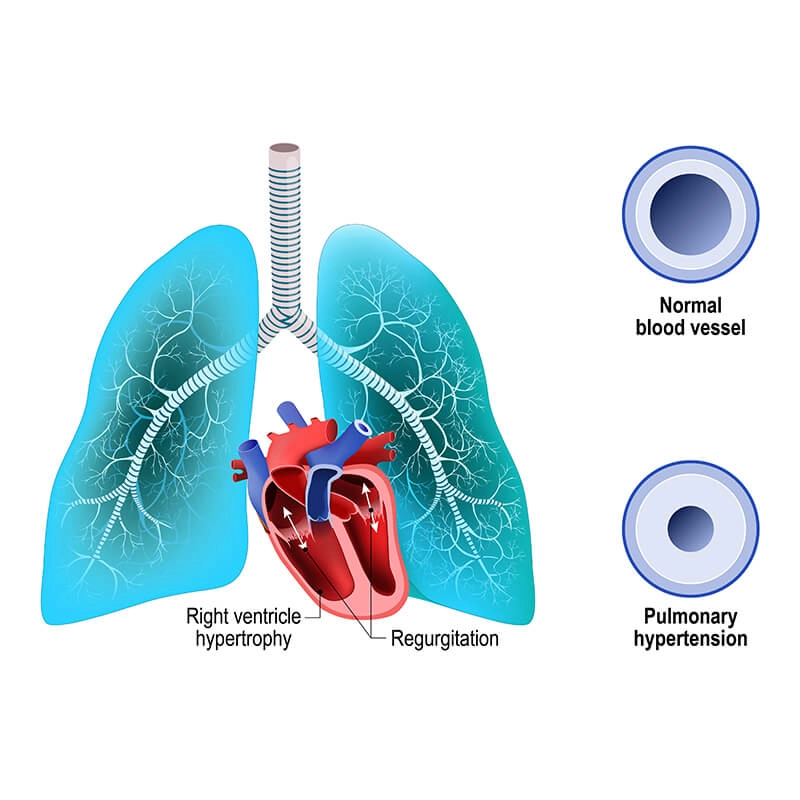Home/Wellness Zone/Sakra Blogs
15th May, 2020

Pulmonary Hypertension (PH)
Pulmonary hypertension (PH) is a progressive lung disease. Arteries in the lungs of people with PH can become damaged, narrowed or stiff which puts pressure on the right side of the heart and causes it to work extra hard to push blood through the arteries. It can lead to light heart failure and death.
PH affects people of all age and races, but there are risk factors that make some people more likely to develop the disease.
Risk Factors of Pulmonary Hypertension
There are a few risk factors that can cause some people more likely to have pulmonary hypertension, but anyone can get it. It affects children and adults, men and women and people of all races and ethnic backgrounds. PH can exist alone or be associated with other conditions such as:
1. Connective tissue disorders (scleroderma, lupus and others)
2. Heart disease
3. HIV
4. COPD
There is no cure for PH, but people diagnosed with one form called chronic thromboembolic pulmonary hypertension (CTEPH), caused by old blood clots in the lungs, may be candidates for a surgery that can potentially reduce or normalize the lung blood pressure.
Symptoms of Pulmonary Hypertension
Pulmonary hypertension causes symptoms such as:
1. Shortness of breath
2. Dizziness
3. Fatigue
Other symptoms include:
1. Chest pain
2. Fainting
3. Swelling of the arms legs, ankles or abdomen
4. Dry cough
5. Raynaud’s phenomenon
The symptoms of PH are similar to other less-threatening illnesses, which is why patients often go years without being diagnosed or are misdiagnosed as having other illnesses such as asthma or COPD. The early diagnosis and proper treatment of PH can extend and improve PH patients’ quality of life. People who think they might have PH then they should seek diagnosis and treatment from a PH specialist.
Not all PH is the same. There are five different groups of Pulmonary Hypertension based on different causes.
Treatment of Pulmonary Hypertension
There is no cure for PH, but there are treatment methods that can manage PH and help patients feel better.
There are several medicines that can be given to manage the condition and slow down the symptoms.
Some treatment methods are:
1. Blood vessel dilators
2. Guanylate cyclase (GSC) stimulators
3. Endothelin receptor antagonists
4. High-dose calcium channel blockers
5. oxygen therapy
If these treatment methods don't work then surgery is required.
Enquire Now
